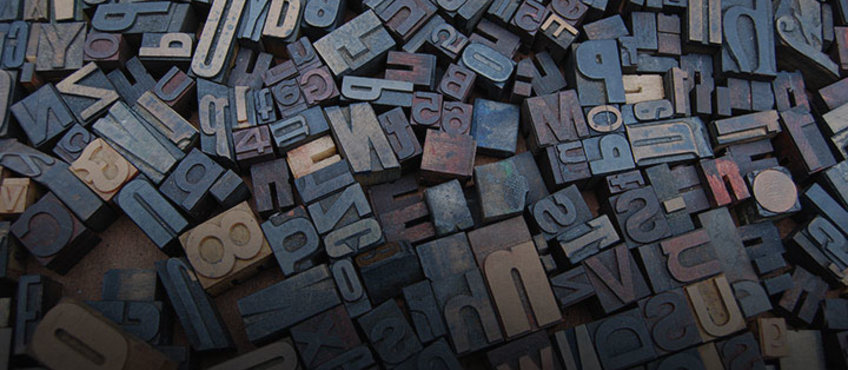Written by Michael Seguin
Stories are built on conflict, and nothing fuels conflict better than a strong protagonist and an even stronger antagonist.
But what is a protagonist? Or an antagonist, for that matter?
What Is a Protagonist? The Quick Definition
The word "protagonist" comes from the Greek word protagonistes, meaning "one who plays the first part, chief actor." The Canadian Oxford Dictionary describes a protagonist as "1. The principal character in a work of fiction, film, drama, etc. 2. The most prominent or most important individual in a situation or course of events. 3. A leading or respected supporter of a cause, movement, etc." These definitions are a good start. However, let's delve into exactly who or what the protagonist is in more detail below.
What Is a Protagonist? An In-Depth Look
The protagonist is responsible for the course of events that comprises a story, moving the plot from point A to point Z. If there's no protagonist, your story is headed for a tailspin.
Think of some protagonists you've followed over the years: Prince Hamlet. Luke Skywalker. Elizabeth Bennet. All these heroes are responsible for the actions driving their stories.
It's worth noting that your protagonist does not have to be a hero (although we often use the terms interchangeably). For instance, Richard III commits treason against his own brother and seduces the woman he widowed (and that's just in Act One). However, despite his vile acts, Richard remains the protagonist precisely because he acts. All the atrocities Richard commits are in the pursuit of his goal: the throne.
True, there may be events beyond your protagonist's control. Often, the protagonist will be thrust into a conflict that predates their involvement in it or even their birth. Sometimes, the protagonist will be totally immersed in their own narrow world until the Call to Adventure comes knocking (or, failing this, breaks down the door).
However, once the protagonist finds themselves embroiled—wittingly or unwittingly—in events, they must take center stage. The Galactic Civil War was raging amidst the stars years before Luke Skywalker blasted his first womp rat in his T-16. However, once the stormtroopers (ironically) set his Uncle Owen's moisture farm ablaze, Luke takes up his father's lightsaber and joins the fight.
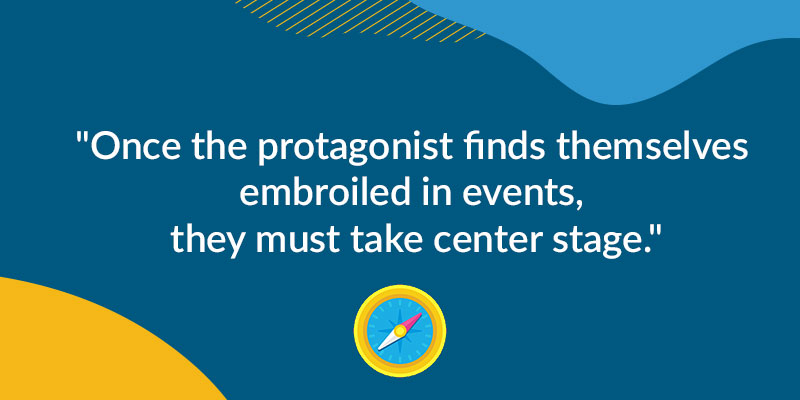
Luke decides to become a Jedi like his father. Luke decides to ignore Obi-Wan's instructions and rescue Princess Leia. Luke decides to take part in the raid against the Death Star. And, in the end, it's Luke who saves the day.
Luke Skywalker, Elizabeth Bennet, and Prince Hamlet all make decisions that move the plot forward. They may be wildly different types of characters, but they are all the protagonists of their respective works.
What Is an Antagonist? The Quick Definition
The word "antagonist" comes from the Greek word antagonistes, meaning "opponent, competitor, villain, enemy, or rival." The Canadian Oxford Dictionary describes an antagonist as "1. An opponent or adversary. 2. A muscle, organism or substance that partially or completely opposes the action of another. 3. A substance that interferes with or inhibits the psychological actions of another." These definitions all coalesce around a common theme: opposition. We'll take a closer look at this below.
What Is an Antagonist? An In-Depth Look
It's useful to think about antagonists in terms of opposition rather than villainy. The antagonist is going to throw as many obstacles in our protagonist's path as they can. In a classic fairy tale, for example, the antagonist could be a dragon guarding the princess's tower.
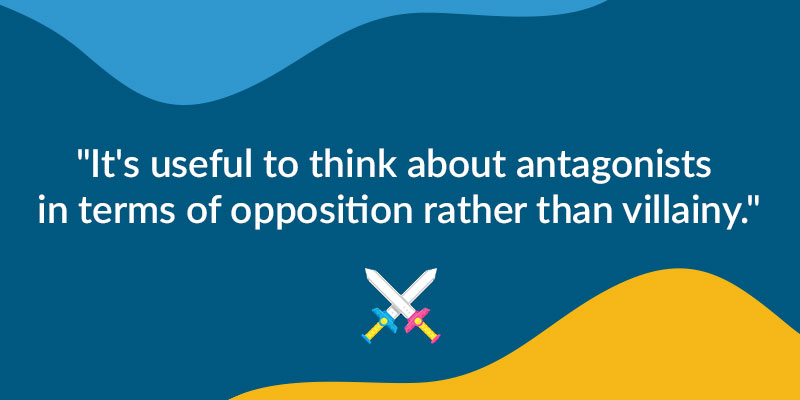
Think about some of your favorite baddies: Darth Vader. Lord Sauron. Hannibal Lecter. Newman from Seinfeld. A great antagonist can inspire just as much (if not more) devotion than your protagonist.
However, just as a protagonist need not be heroic, an antagonist need not be villainous. In the 1993 film version of The Fugitive, Deputy U.S. Marshall Sam Gerard (Tommy Lee Jones) is just doing his job, trying his hardest to track down Dr. Richard Kimble (Harrison Ford), a man falsely convicted of murdering his wife.
The antagonist doesn't even need to be human. Often, the antagonist is simply a force of nature. Think of the mountain in Everest or the shark in Jaws.
So, now that we know the ingredients, we can begin to look at the recipe. How can we craft a hero that can inspire the same admiration as Atticus Finch? Or a villain that can inspire the same level of revulsion as Shakespeare's Iago?
How to Write a Believable Antagonist and Protagonist
1. Consider Your Personal Heroes: Identifying Your Protagonist
Take your nose out of that book. Look around. Who is your personal hero? A celebrity? An activist? A great author? A historical figure? Look closer. There must be someone in your life you look up to—maybe a relative or a friend.
Now, consider why you admire them. What quality or attribute do they possess that you admire? Loyalty? Generosity? Mastery of the bean hopper?
In The Breakout Novelist: Craft and Strategies for Career Fiction Writers, Donald Maass advises writers to write down the name of a personal hero, followed by their most heroic quality. Then, Maass advises writers to assign this quality to their protagonist and find a way for them to demonstrate this quality, even in a small way, in the first scene of the story.
"So many protagonists that I meet in manuscripts start out as ordinary Joes or Janes," Maass writes. "Most stories build toward enormous heroic actions at the end, which is fine, but what about the beginning? What is there to make me care? Often, not enough."
Showing the extraordinary and the admirable as early as possible will make your reader want to keep doing just that: reading. Plus, sprinkling in a quality that you personally admire will have the added effect of endearing your protagonist to you, which can help you keep writing on those long, rainy days where all the wrong words show up to work and you're convinced that you might be illiterate.
2. Goals, Needs, and Flaws: Developing Your Protagonist
Your protagonist has to want something—a goal, a Holy Grail to crusade for. And it's your job, as a writer, to make this goal seem as unattainable as possible. To throw every possible obstacle in your protagonist's path. To make sure that victory is located at the end of a path of broken glass.
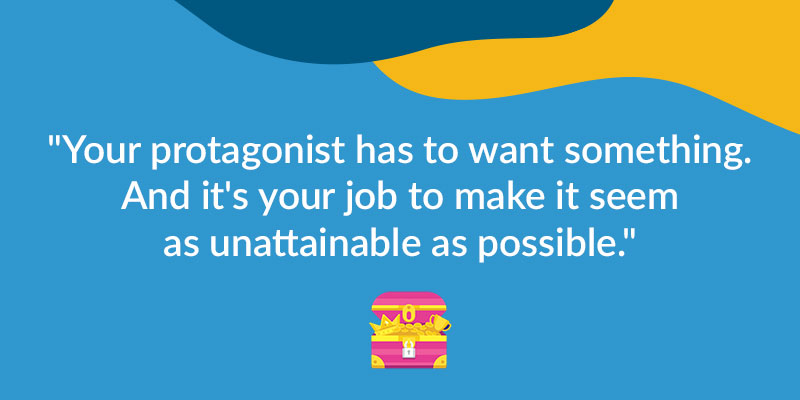
However, what your hero wants and what your hero needs may be two entirely different things.
In The Screenwriter's Bible: A Complete Guide to Writing, Formatting, and Selling Your Script, David Trottier defines what he calls "goals" and "needs." "A goal," Trottier writes, "is whatever your central character outwardly strives for." However, underneath the outward, external goal lies an unsatisfied internal need. A need "has to do with self-image or finding love, or living a better life—whatever the character needs to be truly happy or fulfilled." Trottier adds that the need can either support the goal or, in most circumstances, hinder it.
This is where character flaws come in. "Usually," Trottier writes, "the need is blocked from within by a character flaw. This flaw serves as the inner opposition to the inner need. … The flaw is almost always a form of selfishness, pride, or greed."
A great example comes from Homer. Odysseus's goal is to return home to Ithaca. His need is to be reunited with his wife and son. However, his flaw is his overwhelming pride.
After encountering a man-eating cyclops early in his voyage, Odysseus and his men are trapped in a cave. When the cyclops asks Odysseus his name, he answers: "Nobody." Odysseus later escapes by shoving a wooden stake through the monster's eye. Sailing away, feeling triumphant, Odysseus can't help himself. He shouts his real name over his shoulder at the blinded cyclops.
Unfortunately, the cyclops just happens to be a son of Poseidon. As a result, the cyclops tells his father who blinded him. Poseidon, the god of the sea, retaliates, and Odysseus is thrown off-course by a storm. Thanks to his big mouth, Odysseus has to spend the next ten years trying to find his way home.
After ten years, Odysseus returns to Ithaca only to find his house overrun with suitors for his wife. Even though he wants to kick the door down and loudly announce his presence, he swallows his pride and poses as a beggar to gain an advantage over the interlopers. By overcoming his flaw, Odysseus achieves both his goal and his need.
A character's flaw can generate conflict. In great stories, the external and internal climax will occur simultaneously, with the protagonist overcoming his flaw just in time to save the day.
Failing this, we have a tragedy on our hands.
3. Let's Get Dangerous: Crafting Your Antagonist
Antagonists, in my opinion, are both easier and harder to write—"easier," because a writer typically has much more to worry about when writing a protagonist. Will readers identify with my protagonist? Will readers empathize with my protagonist? Will readers like my protagonist?
But, with antagonists, no such requirements apply. You can make the character as dastardly as you please. There can be something charmingly cathartic about inhabiting the skull of an imaginary character with no morals and no inhibitions.
Antagonists are also typically more interesting than protagonists. They've often endured more. They often have more to say. While the protagonist might start the story as a lump of clay, the antagonist, by contrast, is fully formed. The protagonist is often unsure of who they are and what they want. The antagonist knows.
However, writing an antagonist can be difficult for the same reasons it can be fun. A mustache-twirling schemer who ties young women to railroad tracks on weekends can certainly be entertaining, but won't necessarily be interesting. Creating a complex antagonist will greatly enrich your narrative.
That said, an ineffectual antagonist won't do your book any favors, either. It goes without saying that your antagonist must present a significant threat to your protagonist.
As James Scott Bell writes, "Without a strong opponent, most novels lack that crucial emotional experience for the reader: worry. If it seems the hero can take care of his problems easily, why bother to read on?"
Typically, the antagonist starts the story better equipped and more experienced than your protagonist. It's best to establish the threat your antagonist poses as early as possible. For instance, Stephen King's The Dead Zone introduces the antagonist (Greg Stillson) by having him kick a dog to death.
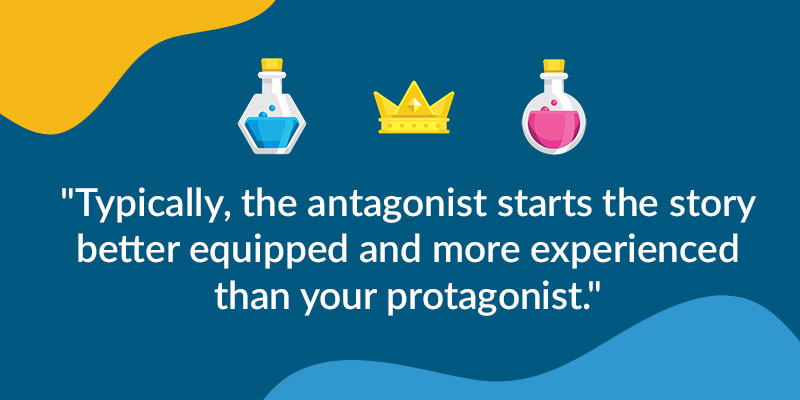
4. Sympathy for the Devil: Complicating Your Protagonist and Antagonist
Just as protagonists can have their nasty moments, not all antagonists are monsters.
Dean Koontz says, "The best villains are those that evoke pity and sometimes even genuine sympathy as well as terror. Think of the pathetic aspect of the Frankenstein monster. Think of the poor werewolf, hating what he becomes in the light of the full moon, but incapable of resisting the lycanthropic tides in his own cells."
It's important to remember that, just as your protagonist must be a fully realized human being with struggles, flaws, and a history, so too must your antagonist. Norman Bates was driven insane by his abusive mother. Darth Vader was seduced by the dark side. Gollum was corrupted by the One Ring.
How does your antagonist feel about the things they've done? Do they believe that they're well intentioned and that all their actions were justified? Or do they regret what they've done and who they've become? Perhaps an antagonist is simply a protagonist who could not overcome their flaws.
5. Duality: Connecting Your Protagonist and Antagonist
It's important to write your protagonist and your antagonist with each other in mind. Think of your protagonist and your antagonist as a duo, a partnership—or even a couple.
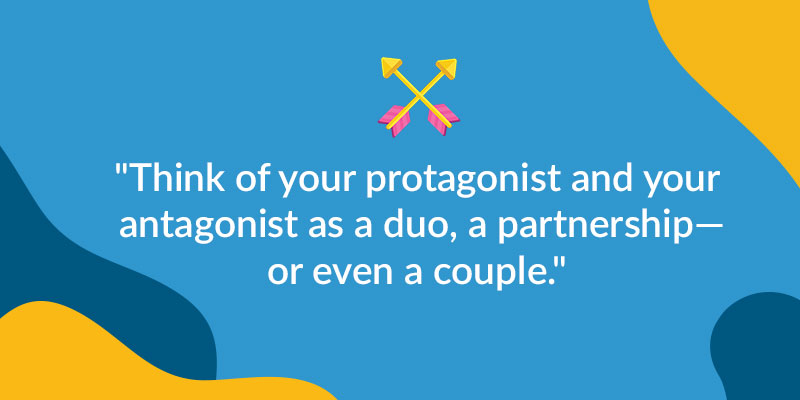
How do the protagonist and the antagonist balance each other out? How do they challenge and change each other? Often, your protagonist and your antagonist will be mirror images. Some of the best villains are uncomfortably similar to their heroes, albeit with a couple of key differences.
Let's look at a surprisingly nuanced example from the world of animation. In Teen Titans, the criminal mastermind Slade represents all the worst qualities of the protagonist, Robin: his relentlessness, his ambition, his competitiveness, his paranoia, his tendency to isolate himself. And what's worse, in pursuing Slade, Robin's flaws are only magnified. Robin begins to act erratically, betraying his allies and lashing out at innocent people. Before long, even his closest friends are pointing out the similarities between the two.
Slade brings out the worst in Robin. And it's only by accepting these unsavory qualities that Robin can prevail. In the end, Robin walks away with a narrow victory and uncomfortable revelations about who he is. Slade becomes a memorable villain not for the deplorable things that he does, but for the deplorable things he causes our hero to do.
Tailor your antagonist to your protagonist. In what ways can your antagonist uniquely torment your protagonist? Perhaps your antagonist represents your protagonist's worst fear or greatest flaw. Darth Vader represents what would happen if Luke Skywalker succumbed to the dark side.
And, remember, the strongest rivalries always involve a personal touch. In The Dark Knight, Harvey Dent was engaged to the woman Bruce Wayne loved. Cain and Abel were brothers.
Conclusion
Well, there you have it. Five sure-fire ways to add some spice to your protagonist and your antagonist. While most narratives are plot focused as opposed to character focused, it is ultimately the characters who decide the plot and whom audiences and readers will remember long after the curtains fall and the final page is turned.
As Lajos Egri said, "Living, vibrating human beings are still the secret and magic formula of great and enduring writing."
It’s Dangerous to Go Alone. Ask an Editor to Join You.
Hire a Professional Editor, or Get a Free Sample
About the Author
Michael Seguin was six-years-old when he realized that he was going to die. Since then, a peculiar brand of mortality saliency has defined most of his actions. A graduate of the University of Windsor with a degree in English Literature, he operates under the calamitous assumption that he has something to say.





